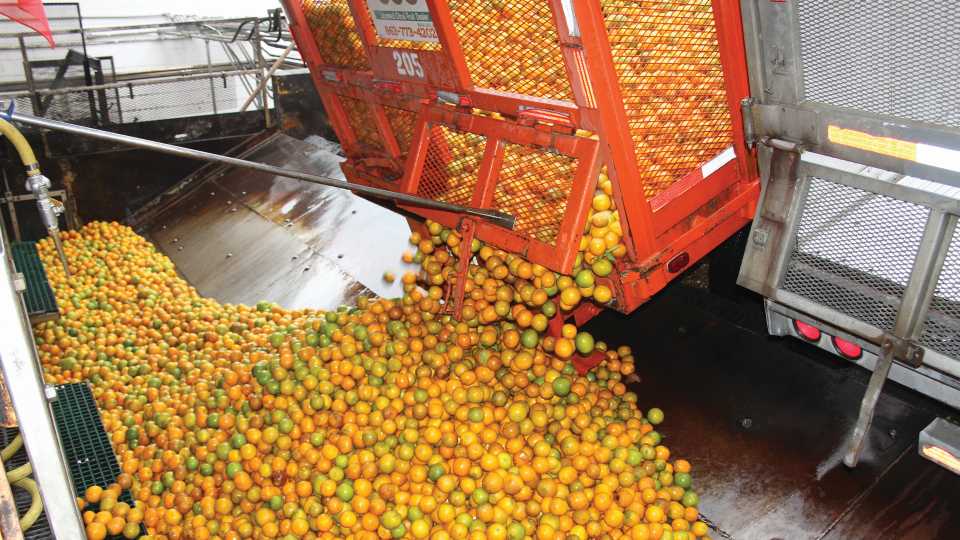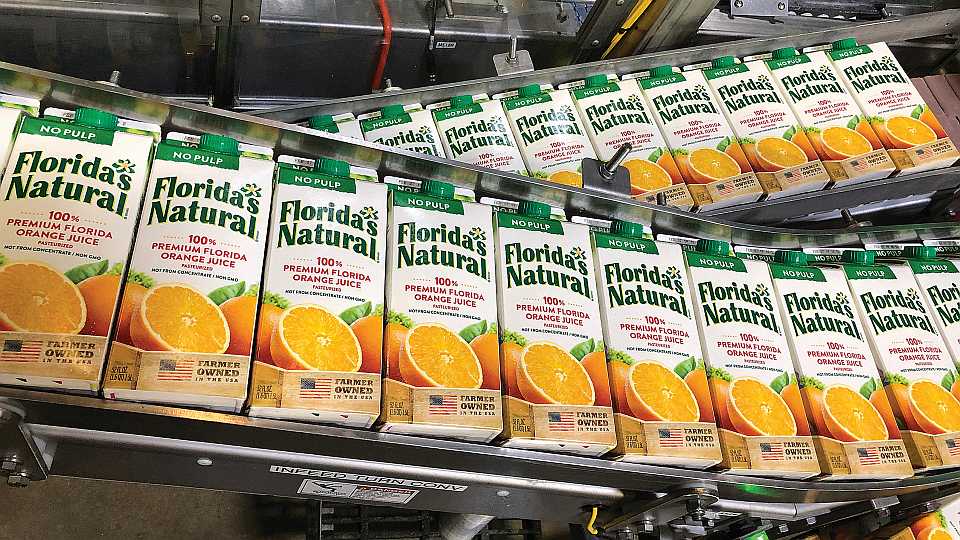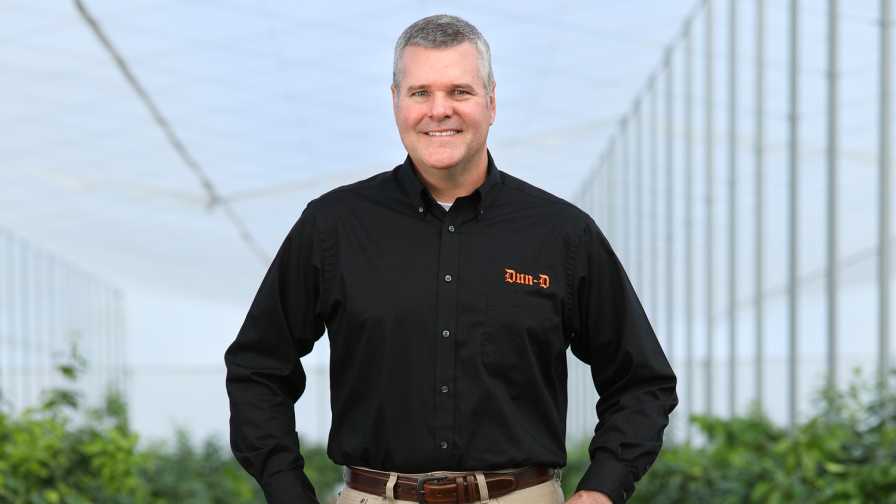
Increased demand spurred by COVID-19 and a smaller crop will help reduce juice inventories in the coming season.
Photo courtesy of Florida’s Natural
Like the rest of the world, Florida’s citrus growers are ready to turn the page on 2020. The past several months will obviously be remembered for world-shaking events like the pandemic. But for citrus producers, the impacts of coronavirus only exacerbated already challenging business conditions, including a season marked by low prices for processing fruit.
As the 2020-2021 season gets underway, Florida citrus growers hope to see prices return to more normal, sustainable levels.
Perfect Storm
Hurricanes can do much harm to citrus groves from a production standpoint, but they also can upset the marketplace. That was the case when Hurricane Irma passed through the heart of Florida’s citrus country in 2017.
According to retired UF/IFAS Citrus Economist Tom Spreen, after the storm, the reduced crop made prices shoot up, along with imports.
“We saw a crop of less than 45 million boxes,” he says. “In 2017-2018, we saw imports go up in response to the situation. Then, in 2018-2019, when the Florida crop was recovering, the imports did not decline.”
In 2018-2019, the crop bounced back after Irma — greater than anticipated — at nearly 72 million boxes. Processors were locked into long-term contracts with Mexico and Brazil because they didn’t expect the rebound. What followed early in the 2019-2020 season were high inventories of juice and processors not offering contracts for the season, or offering them at reduced pricing. Meanwhile, retail OJ sales continued a downward trend. It was the perfect storm for a terrible market.
While many Florida growers had multi-year contracts with juice processors that helped shield them from the market upheaval, some producers were hung out in a bad market scenario — among them were a number of larger players. And even some growers with long-term deals left a portion of their crop uncommitted to take advantage of price upswings.
Caretaking Considerations
As a result of low citrus prices, there were reports that some growers were cutting back on their production programs to save money until prices return to break-even or better.
Some speculate that might have shown up in the final USDA crop estimate of 67.65 million boxes for 2019-2020. The initial estimate in October 2019 called for 74 million boxes. That bullish, early production forecast added to the bearish price outlook.
Citrus consultant Elizabeth Steger released her annual crop estimate for the 2020-2021 crop season in advance of USDA’s initial estimate. She predicts an 8.4% decline in the orange crop coming in 62 million boxes.
Again, some speculate the lower production estimate might be in part due to reduced caretaking last season. Steger notes that less fruit per tree both for early/mids and Valencia factored into her number. She adds that groves experienced a multi-bloom in the spring due to weather conditions, which can affect final fruit size and production.
Kyle Story, Vice President of The Story Companies, a Lake Wales-based citrus grower and grove management provider, says for the most part, the growers they serve kept production programs intact.
“Like with our own groves, almost all of our clients understand citrus is a long-term investment with highs and lows outside of our control,” Story says. “With this fact, we did experience a few accounts closing. But the overwhelming majority of our clients did not cut costs or services.”

Bob Behr, CEO of Florida’s Natural, says the three major juice brands need strong advertising support of orange juice to support the market.
Photo courtesy of Florida’s Natural
Signs of Hope
Coronavirus has helped turn the market in a more positive direction. While food service tanked during the shutdown, retail sales of orange juice soared. Bob Behr, CEO of Florida Natural Growers and the 2019 Florida Grower Citrus Achievement Award winner, notes growers should focus on where they have an advantage — not from concentrate (NFC) juice.
“It appears that Florida’s orange crop will likely be lower; and together with stronger NFC sales, inventories are shrinking,” Behr says. “So, the supply of Florida orange juice (primarily NFC) will likely be down.
“The coronavirus has had a big stimulative effect on OJ NFC sales, which is why Florida NFC inventories are declining rapidly. Consumers are eating at home more, so they have increased their purchases of our products in grocery stores. In addition, our products have a health benefit (immunity defense), which is helping.”
In a submission to Florida Citrus Mutual’s “Triangle,” Florida Citrus Commission Chairman Ned Hancock notes, “In the four-week period ending Aug. 29, average year-over-year sales of total OJ increased nearly 18%, with 32.42 million equivalent gallons sold, according to the Nielsen retail sales report. Sales of NFC OJ increased 22% for the period. Additionally, total OJ sales for the season beginning October 2019 are up by nearly 13%, with 407.6 million equivalent gallons sold.
“A look at the time period spanning from pre-pandemic in mid-February to the end of August shows that as consumers began to adapt to a new normal, while still living under COVID-19 conditions, the sales lift remained elevated over the previous season. Since early March, the additional volume gains recorded by Nielsen have reached nearly 45.68 million gallons, which is roughly 8 million grower boxes.”
All positive news, but Hancock says challenges persist in the new season as the average price for NFC has increased on average by 3%. The average number of NFC items at retail is down, and there are early indications of reduced crop sizes to meet this new level of consumer demand in the long run.
This, he stressed, reinforces the critical role marketing will play in the coming season and year. He added the Florida Department of Citrus will continue its focus on e-commerce promotions as consumers shift to digital avenues to purchase grocery items.
“Since July, the e-commerce campaign has reached 71.9 million impressions and driven $1.8 million in attributed sales of 100% orange juice with a campaign return on ad spend (ROAS) of $5.13,” Hancock states. “Overall, the 2020-2021 campaign aims to reach 750 million impressions and drive $10 million in attributed sales of 100% orange juice with a ROAS of $3.
“This will be achieved through a broadening of the audience and activities such as e-commerce programs leveraging existing partners at Instacart and Walmart, as well as exploring opportunities with Kroger. Messaging will continue to focus on nutrition and wellness while highlighting the premium quality of Florida orange juice and NFC.”
Behr adds the three national juice brands need to do their part.
“Most of the NFC juice goes into three brands: Florida’s Natural, Tropicana, and Simply Orange,” he says. “It really helps Florida orange growers if there is strong advertising support behind those three brands. It is marketing that drives the bus for Florida orange growers.”

Steven Callaham, CEO of Dundee Citrus Growers Association and 2020 Florida Grower Citrus Achievement Award winner.
Photo by Frank Giles
What About the Fresh Side?
Steven Callaham, CEO of Dundee Citrus Growers Association and the 2020 Florida Grower Citrus Achievement Award winner, reports: “Fresh orange prices were lower than we would like to have seen them last season. The juice market was depressed, so growers and packers pushed some incremental volume through the fresh market with aggressive pricing.
“Toward the end of the season, COVID-19 had a positive impact on fresh orange demand and allowed pricing to firm slightly. Unfortunately, most of the late-season oranges were already committed and priced through various programs.
“The lingering effects of COVID-19 continue to provide robust demand for vitamin C-rich oranges, grapefruit, tangerines, and lemons. This demand, combined with reduced supply, should help improve pricing this season.”









